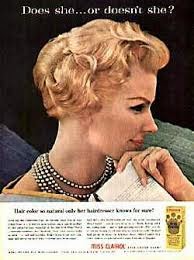Many products have interesting stories of origins, One of them has to thank the US President and the other a mother with a very observant eye. Read on
 |
| First Teddy Bear |
Roosevelt' couldn't
bring himself to shoot the defenseless cub, and ordered it to be set free. The
press contingent following Roosevelt's visit heard about the story, and it inspired
cartoonist Clifford Berryman to draw a cartoon of the incident, entitled
'Drawing the Line in Mississippi'.
The printed
cartoon triggered inspiration for Brooklyn candy store owner Morris Michtom.
Using Berryman's cartoon as a guide, he quickly worked out a pattern, and, his
wife had soon put together a little jointed toy bear cub, which Morris put into
his shop window with a copy of the cartoon, and a handwritten notice saying
'Teddy's Bear'. The Bears sold well and within a year, Michtom closed
his candy store, and founded the Ideal Novelty and Toy Co. - still one of the
biggest toy firms in the world.
 |
| Rene Lacoste |
Rene Lacoste founded La Chemise Lacoste in
1933 with André Gillier, the owner and president of the largest French knitwear
manufacturing firm at the time. They began to produce the revolutionary tennis
shirt Lacoste had designed and worn on the tennis courts with the crocodile
logo embroidered on the chest.
Barbie
doll: Barbie is a fashion doll manufactured by the American
toy-company Mattel Inc and launched in March 1959 by American businesswoman Ruth Handler who is
credited with the creation of the doll using a German doll called Bild Lilli as inspiration.
Ruth Handler watched her daughter Barbara play
with paper dolls, and noticed that she often enjoyed giving them adult roles.
At the time, most children's toy dolls were representations of infants.
Realizing that there could be a gap in the market, Handler suggested the idea
of an adult-bodied doll to her husband Elliot a co-founder of the Mattel toy
company.
During a trip to Europe in 1956 with her children
Barbara and Kenneth, Ruth Handler came across a German toy doll called Bild
Lili. The adult-figured doll was exactly
what Handler had in mind, so she purchased three of them.
She gave one to her daughter and took the others
back to Mattel. Upon her return to the United States, Handler reworked the
design of the doll and the doll was given a new name, Barbie, after her
daughter Barbara. The doll made its debut at the American International Toy
Fair in New York on March 9, 1959. This date is also used as Barbie's official
birthday.
T shirts: The beginning of the T-shirt is credited to the US navy. While other historians say it was the "swabs" in the British
Royal Navy who wore them under their uniforms in World War I, some even suggest
it was the French Army. American soldiers liked the comfortable lightweight
cotton undershirt compared to the wool uniforms American soldiers wore and the
rest is history.
U.S. Navy was issuing
crew-necked, short-sleeved, white cotton undershirts in 1913. The newly created
shirt allowed ease of movement and quick drying. By the 1920s the T-shirt had
become an official tern in the American English Dictionary. By the late 1930s a
couple of US retailers were marketing them, namely Hanes, Fruit of the Loom and
Sears, Roebuck & Co.
By World War II
both the US Navy and army were wearing standard issue t-shirts as underwear.
However, it was really in the 1940’s that the t-shirt really got going with
returning US servicemen. The Smithsonian museum has ‘the oldest printed
T-shirt’ on record in their collection and on display. It is a campaign shirt
for New York Gov. Thomas Dewey's 1948 presidential campaign.
Jeans:
Jeans are trousers made from denim
or Dungaree cloth. Often the term
"jeans" refers to a particular style of pants, called "blue
jeans" and invented by Jacob Davis and Levi Strauss in 1873. Starting in the 1950s, jeans,
originally designed for cowboys and miners, became popular among teenagers.
Historic brands include Levi’s, Lee and Wrangler. Jeans come in various fits,
including skinny, tapered, slim, straight, boot cut, narrow bottom, low waist,
anti-fit, and flare.
Jeans are now a popular article of casual clothing around
the world. They come in many styles and colors; however, blue jeans are the
most popular. The jeans in the picture is the first pair of riveted jeans that
was ever made by Levi Strauss and his partner Jacob Davis. This is the oldest
pair of Levis and is valued at $150,000.



















